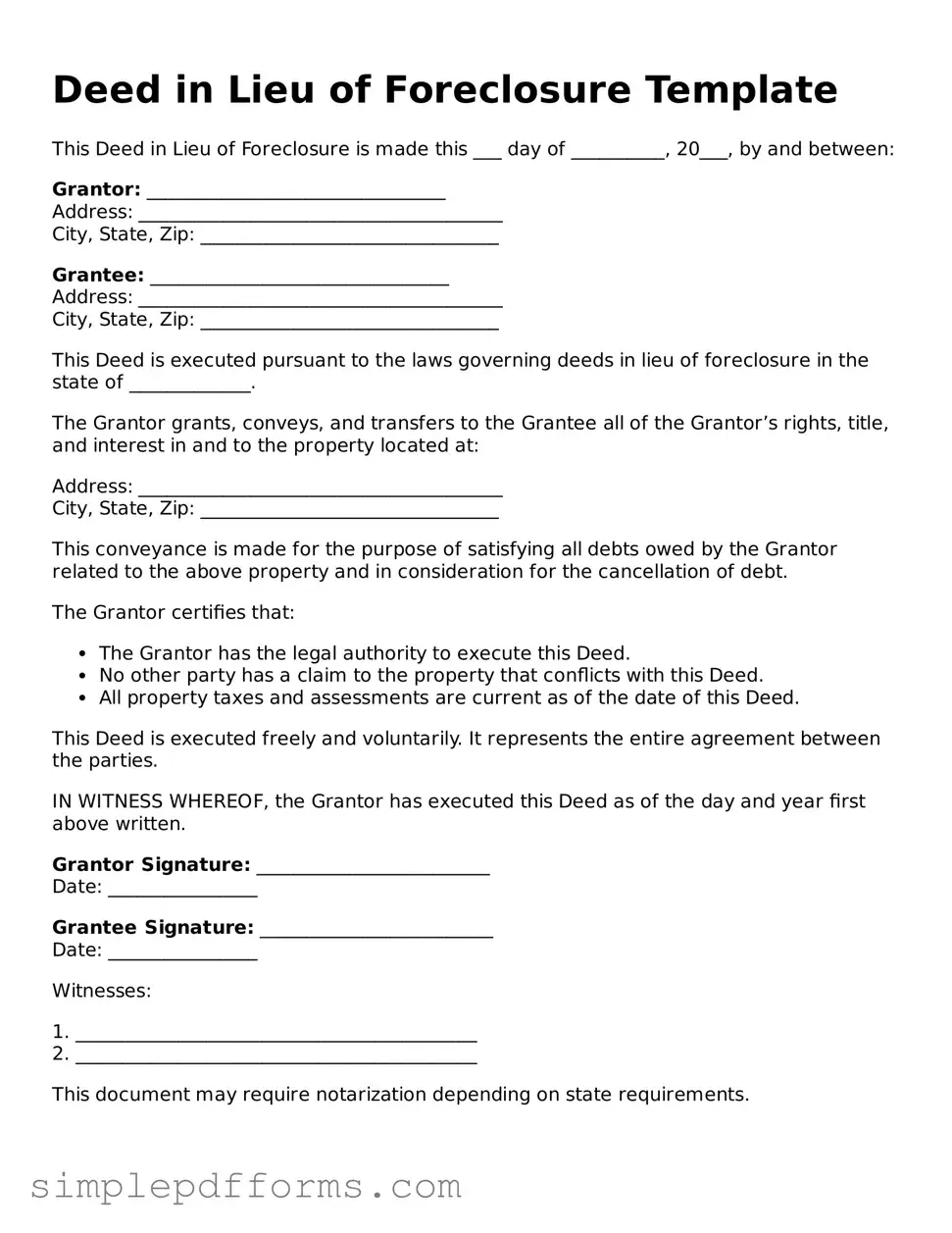Deed in Lieu of Foreclosure Template
This Deed in Lieu of Foreclosure is made this ___ day of __________, 20___, by and between:
Grantor: ________________________________
Address: _______________________________________
City, State, Zip: ________________________________
Grantee: ________________________________
Address: _______________________________________
City, State, Zip: ________________________________
This Deed is executed pursuant to the laws governing deeds in lieu of foreclosure in the state of _____________.
The Grantor grants, conveys, and transfers to the Grantee all of the Grantor’s rights, title, and interest in and to the property located at:
Address: _______________________________________
City, State, Zip: ________________________________
This conveyance is made for the purpose of satisfying all debts owed by the Grantor related to the above property and in consideration for the cancellation of debt.
The Grantor certifies that:
- The Grantor has the legal authority to execute this Deed.
- No other party has a claim to the property that conflicts with this Deed.
- All property taxes and assessments are current as of the date of this Deed.
This Deed is executed freely and voluntarily. It represents the entire agreement between the parties.
IN WITNESS WHEREOF, the Grantor has executed this Deed as of the day and year first above written.
Grantor Signature: _________________________
Date: ________________
Grantee Signature: _________________________
Date: ________________
Witnesses:
1. ___________________________________________
2. ___________________________________________
This document may require notarization depending on state requirements.
